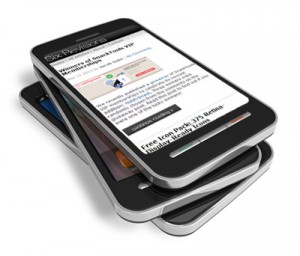
Mobile Site Design Essentials
Mobile design tips from Google
It doesn’t take a tech genius to know that mobile technology is the way forward. More and more consumers are choosing to browse and make purchases using the portable and highly convenient mobile web. This development has rendered it vital for companies to improve their customers’ mobile experience. Despite this, many businesses continue to lack an effective mobile presence. As usual, Google has come to the rescue.
In collaboration with AnswerLab, Google has researched user interactions with a varied range of mobile sites. The study was held in person over a period of 119 hours. Both Android and iOS users were asked to perform certain tasks on their phones, like making a purchase or researching a restaurant. Each participant logged and rated their individual experiences with the mobile sites throughout the study.
The study resulted in Google establishing 25 fundamentals of mobile design. These principles will help companies make their mobile sites easier to navigate, and ultimately more palatable to consumers. Read them all at http://www.google.com/think/multiscreen/whitepaper-sitedesign.html
Our view:
Petri Coetzee, Semantica’s own custom developer, notes the emphasis on lucid workflow that can easily be grasped by the user.
“The main design points dictate that the workflow should be extremely clear to the user. Big, obvious buttons should be added and menu options and ads reduced. In short; minimal distractions equates to maximum comprehension and efficiency.”
Other points include an increased focus on powerful site wide searches, and simple, relatively short forms.
However, Petri has a few reservations about the relevance of mobile optimisations in a South African context, at least for the time being.
“This was only tested in America. Therefore the results pertain mostly to a first world market, where fully enabled smart phones are the norm. Unfortunately, most South Africans don’t have this functionality yet.”




